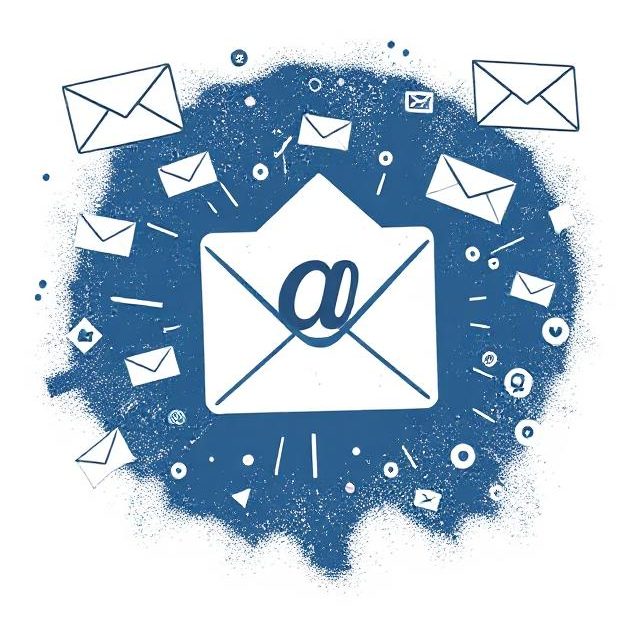In a world where over 300 billion emails are sent daily, standing out in the inbox is a challenge. But it’s not just about getting opened—it’s about how your email looks when it does. Whether it’s on a desktop, tablet, or smartphone, making emails look great in any inbox is essential to successful email marketing.
From email design to coding practices and layout choices, this guide will show you how to create beautiful, functional emails that perform well everywhere.
Why Email Appearance Matters
Your email is often the first impression your brand makes. A broken layout or distorted design can damage your credibility and reduce clicks. On the flip side, a clean and professional design increases readability, trust, and engagement.
If your email doesn’t render properly across devices and platforms (like Gmail, Outlook, Apple Mail, or Yahoo), your campaign could flop—even if your message is strong.
That’s why learning how to make emails look great in any inbox isn’t just design advice—it’s a business strategy.
1. Use Responsive Email Design
With over 60% of emails opened on mobile devices, responsive design is no longer optional. Responsive emails adapt automatically to different screen sizes, providing a smooth user experience whether on a laptop or a phone.
✅ Best Practices:
-
Use fluid layouts and percentages instead of fixed widths
-
Stack columns vertically for mobile
-
Enlarge CTA buttons for easy tapping
-
Maintain readable font sizes (16px or more)
Many email service providers (like Mailchimp, ConvertKit, and Brevo) offer responsive templates by default, which is a great starting point.
2. Stick to a Single-Column Layout
Multicolumn designs look great on desktops but can break or clutter on smaller screens. A single-column layout ensures consistency and readability across all inboxes.
Why it works:
-
Easier to read on mobile
-
Better flow for storytelling and CTAs
-
Simplifies coding and design
This structure also makes your emails cleaner and less distracting, guiding the reader naturally toward your message and call-to-action.
3. Optimize Images (and Always Add Alt Text)
Images enhance engagement, but they must be used correctly. Some email clients block images by default, so relying solely on visuals can hurt your message.
✅ Tips for Better Images:
-
Use compressed images to reduce loading time
-
Add alt text to describe the image (important for accessibility)
-
Avoid text-only images (use real text in HTML where possible)
-
Set image dimensions with HTML/CSS for layout stability
Remember: your message should still make sense without images.
4. Use Web-Safe Fonts
Fonts are a subtle but powerful part of your design. However, not all fonts render the same in every email client. Stick to web-safe fonts like:
-
Arial
-
Verdana
-
Times New Roman
-
Georgia
-
Tahoma
If you want to use custom fonts, include a fallback web-safe font to ensure consistency. Also, avoid fonts smaller than 14px on mobile for readability.
5. Keep Your Code Clean and Simple
Emails don’t support all modern HTML and CSS features. Email clients like Outlook have limited compatibility, so it’s crucial to stick with clean, table-based HTML.
Coding Tips:
-
Use inline CSS (not external stylesheets)
-
Avoid JavaScript (most clients block it)
-
Test your emails in Litmus or Email on Acid to preview across inboxes
-
Avoid complex elements like forms or dynamic scripts
This helps your emails display correctly across platforms and reduces the chances of layout issues.
6. Create Clear and Consistent CTAs
A good-looking email also needs to drive action. Make your call-to-action buttons:
-
Easy to find
-
Mobile-friendly (touch-friendly buttons)
-
Color-contrasted from the background
-
Short and actionable (e.g., “Shop Now”, “Start Free Trial”)
Place your CTA in the upper half of the email as well as the bottom for better engagement.
7. Test Across Major Email Clients
Even if your design looks perfect in your builder, that doesn’t guarantee it will display well in all inboxes. That’s why testing is crucial.
Use tools like:
-
Litmus
-
Email on Acid
-
Mailtrap
These platforms simulate how your email looks across major email clients and devices, so you can fix issues before hitting send.
8. Keep It Light and Scannable
People skim emails. Use formatting and layout tricks to make your content digestible at a glance.
Formatting Tips:
-
Use short paragraphs and bullet points
-
Highlight key phrases in bold
-
Maintain generous padding and white space
-
Use section dividers for clarity
The easier your email is to read, the better it will perform—on any screen.
9. Avoid Spam Triggers
Even a beautiful email won’t get opened if it lands in the spam folder. To increase inbox placement:
-
Avoid excessive caps and exclamation points
-
Don’t overuse red text or image-only messages
-
Include a plain-text version
-
Always have a visible unsubscribe link
Following these best practices keeps your emails clean, credible, and deliverable.
Final Thoughts
No matter how creative or compelling your message is, it won’t matter if your audience can’t read it clearly. Knowing how to make emails look great in any inbox ensures that your design, message, and call-to-action land exactly as intended.
From mobile responsiveness and smart layouts to clean code and testing, every detail adds up to a better email experience. Follow these tips, and you’ll not only impress your subscribers—you’ll convert more of them, too.
Also, you can learn more about Text vs HTML Emails here.
